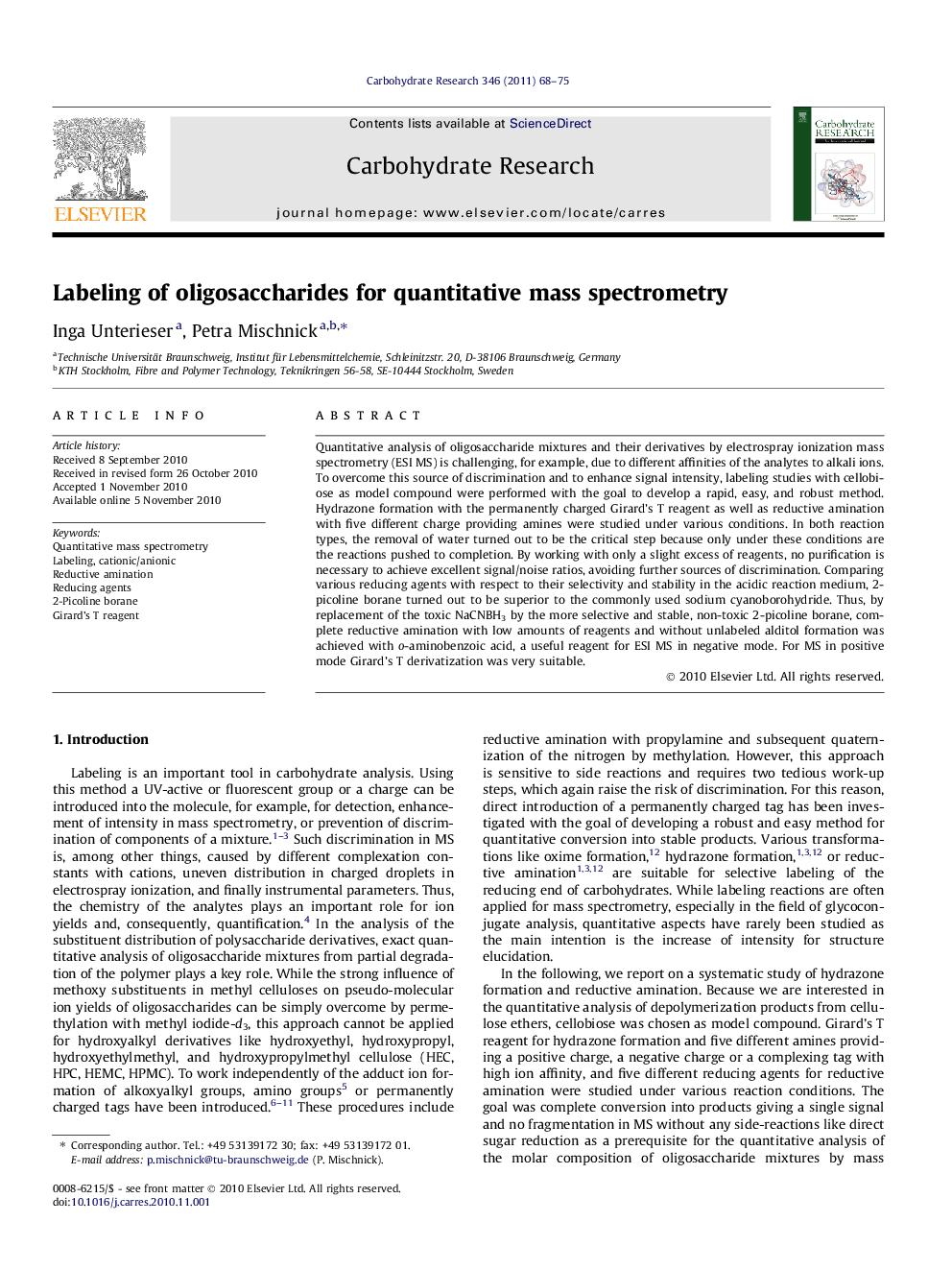| Article ID | Journal | Published Year | Pages | File Type |
|---|---|---|---|---|
| 1388455 | Carbohydrate Research | 2011 | 8 Pages |
Quantitative analysis of oligosaccharide mixtures and their derivatives by electrospray ionization mass spectrometry (ESI MS) is challenging, for example, due to different affinities of the analytes to alkali ions. To overcome this source of discrimination and to enhance signal intensity, labeling studies with cellobiose as model compound were performed with the goal to develop a rapid, easy, and robust method. Hydrazone formation with the permanently charged Girard’s T reagent as well as reductive amination with five different charge providing amines were studied under various conditions. In both reaction types, the removal of water turned out to be the critical step because only under these conditions are the reactions pushed to completion. By working with only a slight excess of reagents, no purification is necessary to achieve excellent signal/noise ratios, avoiding further sources of discrimination. Comparing various reducing agents with respect to their selectivity and stability in the acidic reaction medium, 2-picoline borane turned out to be superior to the commonly used sodium cyanoborohydride. Thus, by replacement of the toxic NaCNBH3 by the more selective and stable, non-toxic 2-picoline borane, complete reductive amination with low amounts of reagents and without unlabeled alditol formation was achieved with o-aminobenzoic acid, a useful reagent for ESI MS in negative mode. For MS in positive mode Girard’s T derivatization was very suitable.
Graphical abstractFigure optionsDownload full-size imageDownload as PowerPoint slide
